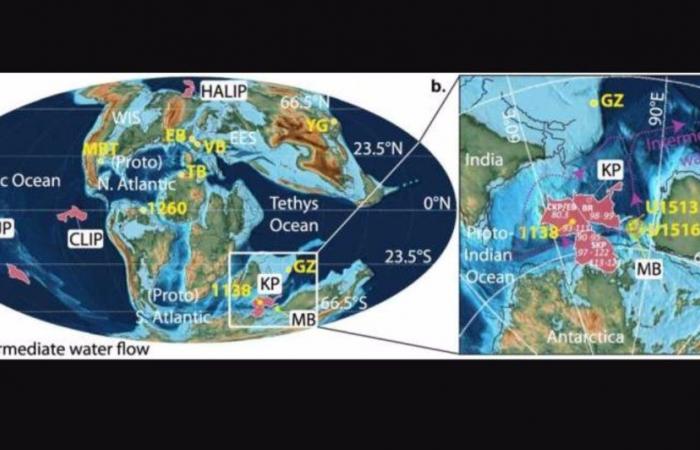MADRID, June 17 (EUROPA PRESS) –
The University of Exeter has shed new light on the causes of the second oceanic anoxic event, which caused severe global warming and acidification of the oceans. 94 million years ago.
The study, which attributes this event to a succession of pulses of massive volcanism, has been published in Nature Communications.
The episode, called “second oceanic anoxic event” (OAE 2 for its acronym in English), was one of the most important climate catastrophes in the geological record, causing extinctions in the oceans and on land.
Anoxic events are prolonged periods in which large swaths of Earth’s oceans run out of dissolved oxygen, creating toxic waters and leading to mass extinctions and habitat loss.
The cause of this anoxic event, which lasted more than 500,000 yearshas been the subject of debate among experts.
However, the team of researchers has shown that massive volcanism was the likely trigger, pointing the source to a vast oceanic plateau located beneath the remote Kerguelen Islands, south of the Indian Ocean.
For the new study, the researchers analyzed geochemical and micropaleontological data collected from ocean sediment cores in the Mentelle Basin, located off the coast of Western Australia, collected by the International Ocean Discovery Program.
PULSES OF MASSIVE VULCANISM
They found that sediment cores showed clear evidence of sedimentary mercury, which meant a series of significant “pulses” of intense mass volcanism in the period leading up to and during the main phase of the anoxic event.
Furthermore, radiogenic isotopes of neodymium and strontium show that the Kerguelen Plateau, which was much closer to the Mentelle Basin in the Cretaceous period, was uplifted as part of volcanic activity.
The research team suggests that severe volcanic events would have caused an explosion of carbon dioxide release, which would be essential to warm the climate and cause ocean acidification.
They believe this phenomenon is the key reason for the anoxic event and what forced the Earth to reach a tipping point to become a “greenhouse world” at that time.
Chloe Walker-Trivett, who led the research while undertaking her PhD studies at Camborne School of Mines at the University of Exeter’s Penryn Campus, said it’s a statement: “Although OAE 2 has been very well studied, Until now, most research has focused on the northern hemisphere, which has given rise to a rather one-sided view of the event.
“Our southern hemisphere study site, off the southwestern coast of Australia, was at a high southern latitude (about 60 degrees south) during the mid-Cretaceous, when OAE 2 occurred, and has provided us with a completely new, and has pointed to Kerguelen volcanism as the probable trigger”.
Sev Kender, from the University of Exeter and co-author of the study, added: “Detecting the timing of massive volcanism in the geological past is challenging, but crucial if we want to use past rapid global warming events as a possible analogue for future climate change.
“Our key innovation was to combine the new mercury indicator for volcanic eruptions with radiogenic isotopes of neodymium and strontium that determine the sources of eroded rocks in the ocean basin.
“The increasing amount of material eroded from a volcanic source showed that the nearby Kerguelen Great Igneous Province was uplifting at the time of active volcanism, rather than a series of other volcanic provinces that had previously been considered the cause.”






